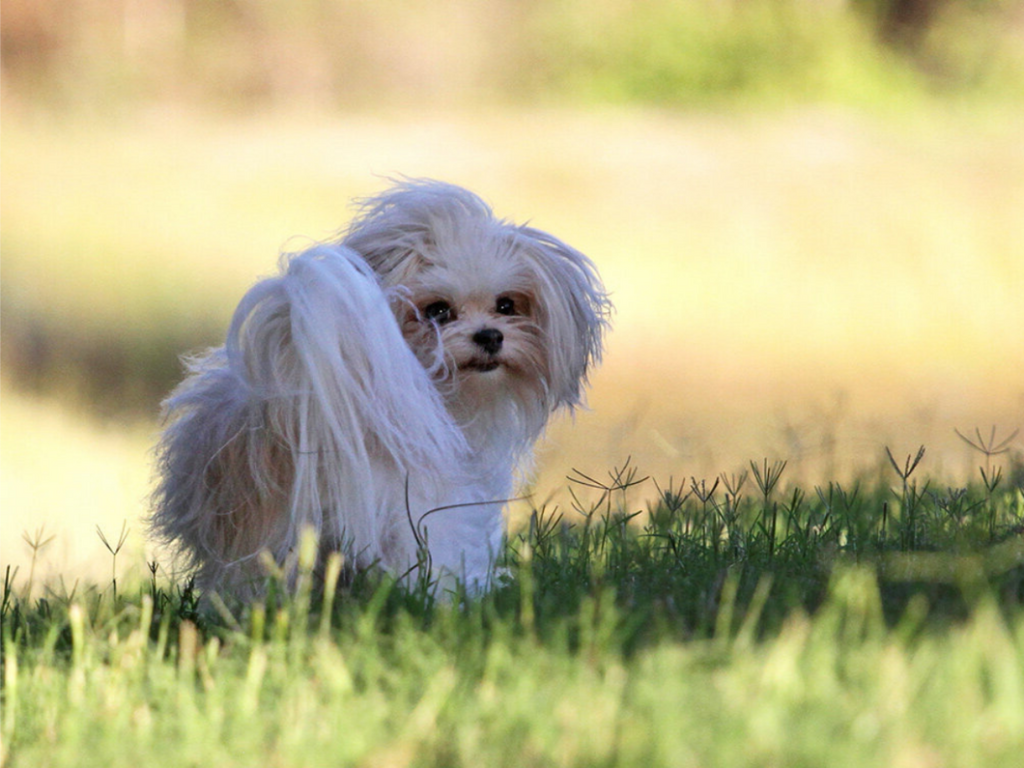- Breed Category: Toy
- Country of Origin: United States
- Average Height: 20-28 cm (8-11 inches)
- Average Weight: 2-5 kg (4-11 pounds)
- Average Life Span: 12-15 years
- Grooming Requirements: Moderate, regular brushing needed
- Exercise Requirements: Low, short daily walks
- Coat Type: Long, silky, or smooth
- Coat Color Variations: Various, including white, black, tan
- Shedding Level: Low
- Ear Type: Erect or dropped
- Tail Type: Plumed, carried over back
- Temperament: Affectionate, friendly, intelligent
- Intelligence Level: High
- Barking Tendency: Low to moderate
- Compatibility with Children: Good, gentle with kids
- Compatibility with Other Pets: Generally good
- Training Ease: Relatively easy, eager to please
- Common Health Issues: Patellar luxation, dental issues
- Dietary Needs: High-quality small breed diet
- Energy Level: Moderate
- Drooling Tendency: Low
- Sensitivity to Weather: Sensitive to cold
- Overall Maintenance Level: Moderate
- Original Purpose: Companion
- Year of Recognition by Kennel Clubs: Not widely recognised
- Apartment Friendly: Yes, very suitable
- Best Suited For: Families, singles, elderly
- Cost of Ownership: Moderate
- Unique Traits: Butterfly ears, expressive eyes
“The Mi-Ki is a delightful blend of charm and intelligence, making it a perfect companion for those seeking a small, affectionate dog.”
Welcome to the world of the Mi-Ki, a toy dog breed that’s as unique as its name. Known for their gentle nature and friendly disposition, Mi-Kis are a relatively new breed, but they’ve quickly captured the hearts of dog lovers worldwide. This article aims to give you a comprehensive look at the Mi-Ki’s characteristics, history, and care needs. Whether you’re considering adding a Mi-Ki to your family or simply curious about this charming breed, you’ll find all the essential information right here. Let’s dive into what makes the Mi-Ki so special.
History and Development of the Mi-Ki Breed

The Mi-Ki breed is a fascinating blend of history and modern development. Emerging in the late 20th century, the Mi-Ki was created by crossing several small breeds, including the Maltese, Papillon, and Japanese Chin. This unique mix was designed to produce a dog with a gentle temperament and a charming appearance. The breed’s development focused on creating a companion dog that was both affectionate and adaptable, making it ideal for various living situations.
Role in Companionship and as a Toy Breed
Mi-Kis are celebrated for their role as companion animals. Their small size and friendly nature make them perfect for those living in apartments or smaller homes. As a toy breed, they are easy to manage and require less space than larger dogs. Despite their size, Mi-Kis are known for their lively personalities and love for human interaction, making them excellent companions for individuals and families alike.
Key Figures and Organisations in Breed Recognition
The journey to recognition for the Mi-Ki breed involved several key figures and organisations. The American Mi-Ki Club and the International Mi-Ki Registry have been instrumental in promoting the breed and establishing breed standards. These organisations have worked tirelessly to ensure the Mi-Ki is recognised for its unique qualities and to maintain the breed’s integrity. Their efforts have helped the Mi-Ki gain popularity and recognition among dog enthusiasts worldwide.
Physical Characteristics of the Mi-Ki
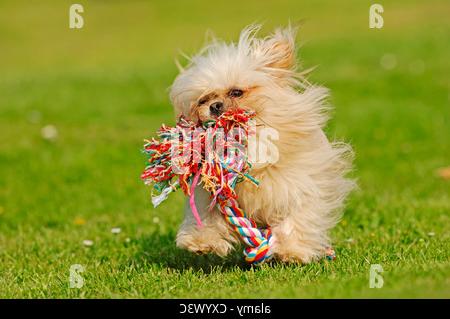
Appearance
The Mi-Ki is a small dog, typically weighing between 2 to 5 kilograms, making it an ideal choice for those who prefer a compact companion. Their size is perfect for cuddling, yet they carry themselves with a certain elegance. Mi-Kis have two coat types: long and smooth. The long coat is silky and flowing, while the smooth coat is soft and plush. Both types are low-shedding, which is a bonus for those concerned about allergies.
Distinctive Features
One of the most striking features of the Mi-Ki is their expressive eyes. Large and round, these eyes seem to communicate a world of emotion and intelligence. Their ears can be either erect or dropped, adding to their unique charm. The Mi-Ki’s tail is another distinctive trait, often carried over their back in a gentle curve, adding to their overall graceful appearance.
Unique Physical Traits
Despite their small stature, Mi-Kis are known for their sturdy build. They have a balanced body that allows them to move with agility and grace. Their small size doesn’t hinder their lively spirit; instead, it complements their playful and affectionate nature. This combination of physical traits makes the Mi-Ki a truly unique and endearing breed.
Temperament and Behaviour of the Mi-Ki

Typical Personality Traits
Mi-Kis are known for their affectionate and intelligent nature. They thrive on human interaction and are quick learners, making them a joy to train. Their adaptable personality means they can easily adjust to different living environments, whether it’s a bustling family home or a quiet apartment.
Suitability as a Family Pet and Companion Animal
As a family pet, the Mi-Ki is hard to beat. Their gentle disposition makes them a great fit for families with children. They are patient and loving, often forming strong bonds with their human companions. Their small size and low exercise needs make them ideal for those who may not have a large backyard.
Interaction with Children and Other Pets
Mi-Kis are generally good with children, displaying a playful yet gentle nature. They enjoy being part of family activities and are known to be quite tolerant of the noise and excitement that children bring. When it comes to other pets, Mi-Kis are usually friendly and sociable, getting along well with other dogs and even cats.
Training and Exercise Needs of the Mi-Ki
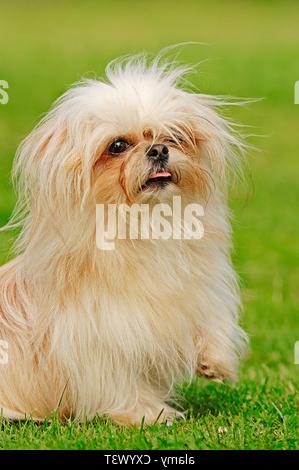
Importance of Early Training and Socialisation
Getting your Mi-Ki started with training and socialisation early on is crucial. These little dogs are smart and eager to learn, so introducing them to new experiences, people, and other animals while they’re young helps them grow into well-rounded adults. Early socialisation can prevent behavioural issues and ensure they are comfortable in various situations.
Recommended Training Techniques for Mi-Kis
When it comes to training, positive reinforcement is the way to go. Mi-Kis respond well to praise, treats, and gentle encouragement. Keep training sessions short and fun to maintain their interest. Consistency is key, so make sure everyone in the household is on the same page with commands and rules.
Exercise Requirements and Activities They Enjoy
Mi-Kis don’t need a lot of exercise, but they do enjoy daily walks and playtime. A short stroll around the neighbourhood or a game of fetch in the backyard can keep them happy and healthy. They also love interactive toys and puzzles that challenge their minds. Despite their small size, they have a lively spirit and enjoy being active with their family.
Health and Lifespan of the Mi-Ki
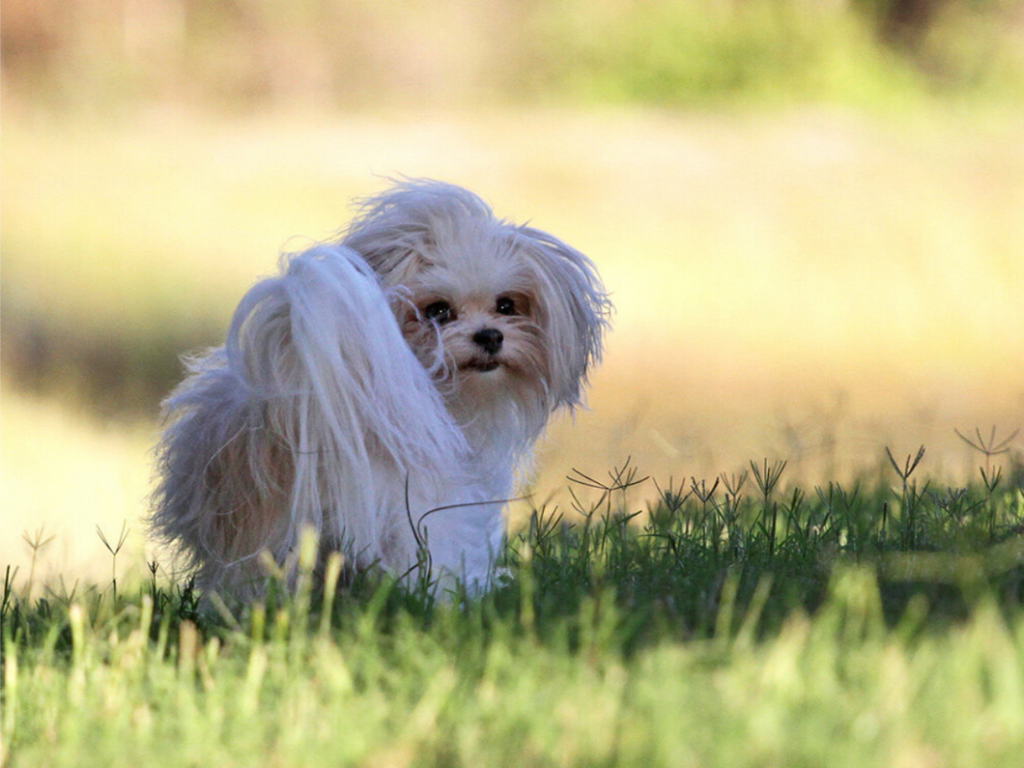
Common Health Issues
Mi-Kis are generally healthy, but like any breed, they can be prone to certain health issues. Some common concerns include dental problems, patellar luxation, and eye conditions. Regular vet check-ups can help catch these issues early, ensuring your Mi-Ki stays in top shape.
Average Lifespan and Health Tips
The Mi-Ki typically enjoys a lifespan of 12 to 15 years. To keep them healthy, a balanced diet and regular exercise are essential. While they don’t need extensive workouts, daily walks and playtime are important. Keeping their weight in check can prevent joint issues and other health problems.
Preventative Care Recommendations
- Regular vet visits for vaccinations and health screenings.
- Dental care, including brushing their teeth and providing dental chews.
- Grooming to keep their coat clean and free of mats.
- Monitoring their diet to prevent obesity.
By following these simple steps, you can help ensure your Mi-Ki leads a long, healthy, and happy life.
Grooming and Maintenance of the Mi-Ki
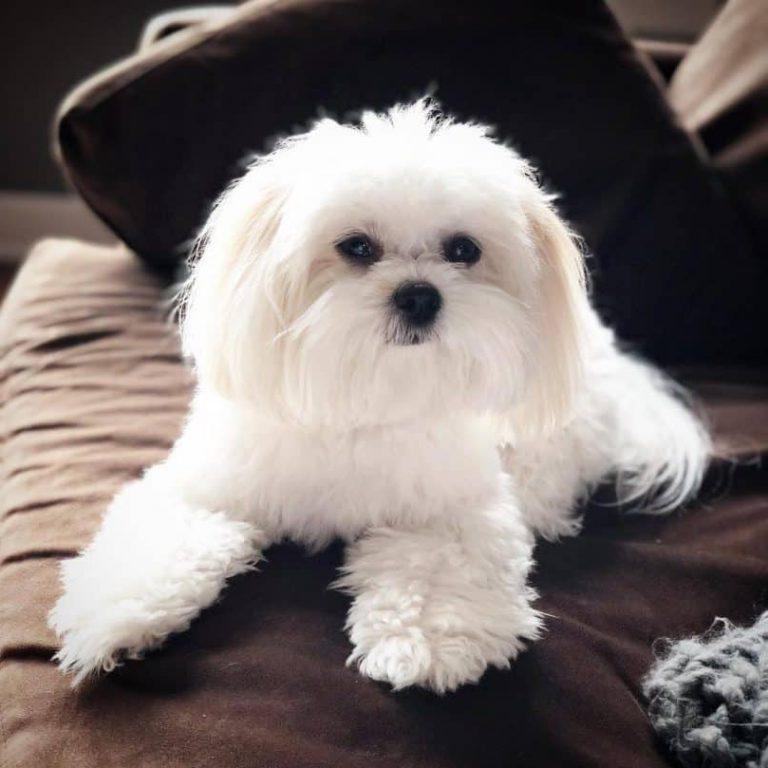
Coat Care and Grooming Routines
Mi-Kis are known for their beautiful coats, which come in both long and smooth varieties. Regular grooming is essential to keep their coat looking its best. For long-coated Mi-Kis, brushing a few times a week helps prevent tangles and mats. A slicker brush or a comb works well for this task. Smooth-coated Mi-Kis require less frequent brushing, but a weekly session will keep their coat shiny and healthy.
Shedding and Seasonal Grooming Tips
One of the perks of owning a Mi-Ki is their low-shedding nature. However, they do experience some seasonal shedding, particularly in spring and autumn. During these times, more frequent brushing can help manage loose hair and keep your home tidy. Regular baths, about once a month, will also help maintain their coat’s condition and minimise shedding. Always use a gentle dog shampoo to avoid skin irritation.
Diet and Nutrition for the Mi-Ki
Nutritional Needs for Optimal Health
Feeding your Mi-Ki the right diet is crucial for their health and happiness. These little dogs need a balanced diet rich in proteins, healthy fats, and essential vitamins. Look for high-quality dog food that lists meat as the first ingredient. Avoid fillers like corn and soy, which offer little nutritional value.
Foods to Include and Avoid
Include lean meats, fish, and vegetables in their diet. These provide the necessary nutrients for energy and a shiny coat. Avoid foods high in sugar and artificial additives, as they can lead to obesity and other health issues. Treats should be given sparingly and should be healthy options like small pieces of cooked chicken or carrot sticks.
Feeding Schedules and Portion Recommendations
Mi-Kis do well with a consistent feeding schedule. Two small meals a day are usually sufficient. Portion sizes depend on their age, weight, and activity level, so it’s best to consult with your vet for specific recommendations. Always ensure fresh water is available to keep them hydrated.
Fun Facts and Trivia about the Mi-Ki Breed
Interesting Tidbits about the Mi-Ki
The Mi-Ki is a relatively new breed, but it has quickly gained a reputation for its unique characteristics. Did you know that Mi-Kis are often referred to as “the little dog with a big heart”? Despite their small size, they have a personality that can fill a room. They are also known for their quiet nature, rarely barking, which makes them perfect for apartment living.
Another fun fact is that Mi-Kis are hypoallergenic, making them a great choice for those with allergies. Their low-shedding coats mean less dander, which is often the culprit for allergic reactions. Plus, their coats come in a variety of colours and patterns, adding to their charm.
Famous Mi-Kis in Media or History
While the Mi-Ki may not be as well-known as some other breeds, it has made its mark in the world of media and history. A notable Mi-Ki named “Miki” appeared in a popular children’s book series, capturing the hearts of young readers with its adventures. Additionally, several celebrities have been spotted with their Mi-Kis, further boosting the breed’s popularity.
These little dogs may not have a long history, but they are certainly making their presence felt in the world of pets and beyond. Their unique blend of traits and their growing fan base suggest that the Mi-Ki is a breed to watch in the coming years.
Final Thoughts
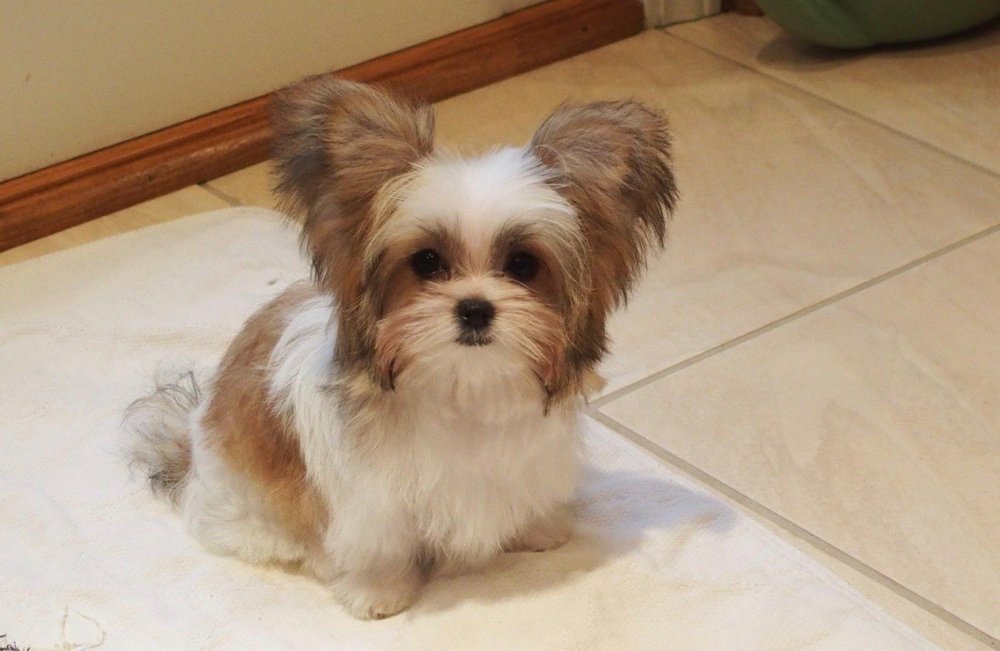
The Mi-Ki is a charming and intelligent companion. With its affectionate nature and adaptability, this breed is perfect for families and individuals alike. Despite its small size, the Mi-Ki offers a big heart and a lively spirit, making it a delightful addition to any home. As you consider welcoming a Mi-Ki into your life, remember the joy and companionship they bring, along with the responsibility of their care. Embrace the opportunity to share your life with this unique breed, and enjoy the rewarding journey ahead.
